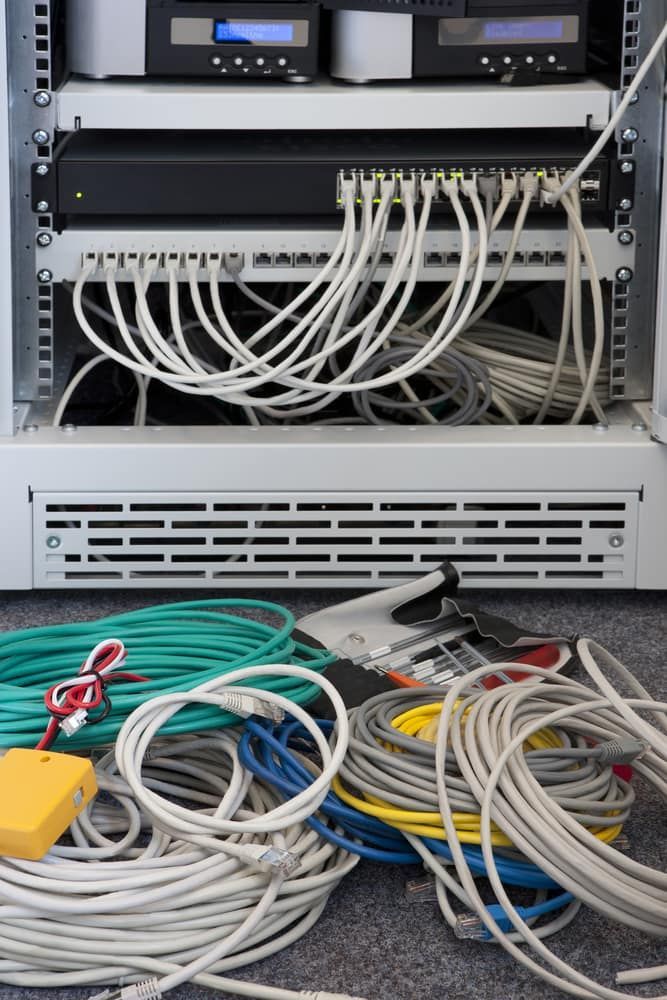Data Cabling in Ingham
Our data cabling services create strong, dependable networks that keep your internet, phone, and devices working together seamlessly.
Nature's Symphony
ButtonIngham Data Cabling
Flexicoms Communications connects Ingham with data cabling solutions that are built for today’s technology and tomorrow’s needs.
We create networks that make it easy to work, communicate, and stay online without interruptions. Every installation is planned for efficiency, from the path the cables take to the placement of outlets and connection points. Our approach keeps everything organised, discreet, and simple to maintain. Whether you are setting up a home office, wiring a business, or upgrading an older system, we make sure your cabling is ready to perform from day one.
For a data cabling service designed around your space, call 07 4776 5432.
Why Choose Us?
At Flexicoms Communications, we focus on providing data cabling systems that are dependable, well-structured, and built to last. Each installation is tailored to suit the demands of your technology and the layout of your premises. Here is what you can expect from our data cabling services:
- Installation for residential, commercial, and industrial properties.
- Cabling networks designed for speed and reliability.
- Support for internet, phone, and other communication systems.
- Neat, well-organised cabling for a professional finish.
- Testing to confirm performance and connection quality.
- Options for additional data points and future expansion.
For data cabling installation and upgrades in Ingham, contact Flexicoms Communications on 07 4776 5432.
Data
We install data cabling for homes, offices, and commercial premises, providing a reliable network foundation for internet, phone systems, and connected devices. Every installation is planned to suit the layout of your property and the demands of your network. This includes choosing the right cable type, mapping routes for efficiency, and keeping everything neat and accessible.
Whether you’re wiring a new building, upgrading an older system, or adding extra points, we ensure connections are secure and tested for consistent performance. A well-installed data cabling network can support faster speeds, reduce downtime, and make it easier to expand your system in the future.
Fibre Optic
We supply and install fibre optic cabling for high-speed, high-capacity network connections. Fibre optic technology uses thin strands of glass or plastic to transmit data over long distances with minimal loss, making it ideal for businesses that rely on fast and stable communication.
Installation starts with assessing your site to determine the best routing and termination points. We then install and connect the fibre, testing each line to confirm it meets performance standards. Fibre optic cabling offers greater bandwidth than traditional copper cables, allowing your network to handle more data at higher speeds. This makes it a future-ready choice for demanding applications.
FAQ
How can cable quality affect performance?
The quality of your cabling can directly impact how well your network performs. High-quality cables are built to reduce interference, hold strong connections, and support the bandwidth modern devices require. Poor quality or damaged cables can slow speeds, cause dropouts, or create inconsistent performance. Environmental factors such as extreme temperatures, moisture, or physical strain can also affect how long cables last. Choosing cables that meet recognised standards and suit their location can help maintain network reliability. While it might be tempting to cut costs, good quality cabling is a solid investment that can prevent frustrating and time-consuming issues in the future.
Why is good cable management important?
Organised cabling keeps a network easier to maintain, safer to work around, and less likely to be damaged. Neat arrangements prevent tangling, make it easier to find the right connections, and reduce the risk of cables being unplugged accidentally. Proper routing can also improve airflow around equipment, which helps prevent overheating. Labelling cables ensures that adding or removing devices is straightforward, saving time during changes or repairs. Using trays, racks, or clips helps keep everything in place. When cables are tidy, the entire network looks more professional and operates more efficiently, making daily use and future upgrades simpler to manage.
What should I consider when planning a cabling installation?
A good cabling installation starts with knowing your current and future needs. Consider how many devices will be connected, the type of data they handle, and the speeds you require. Think about whether Ethernet or fibre optic is best for your situation and budget. The layout of the space, as well as environmental factors like moisture or heat, will affect the type of cable needed. Planning for easy access can make maintenance and future expansion easier. By addressing these factors early, you can create a cabling system that delivers reliable performance now and adapts to changes in technology over time.






